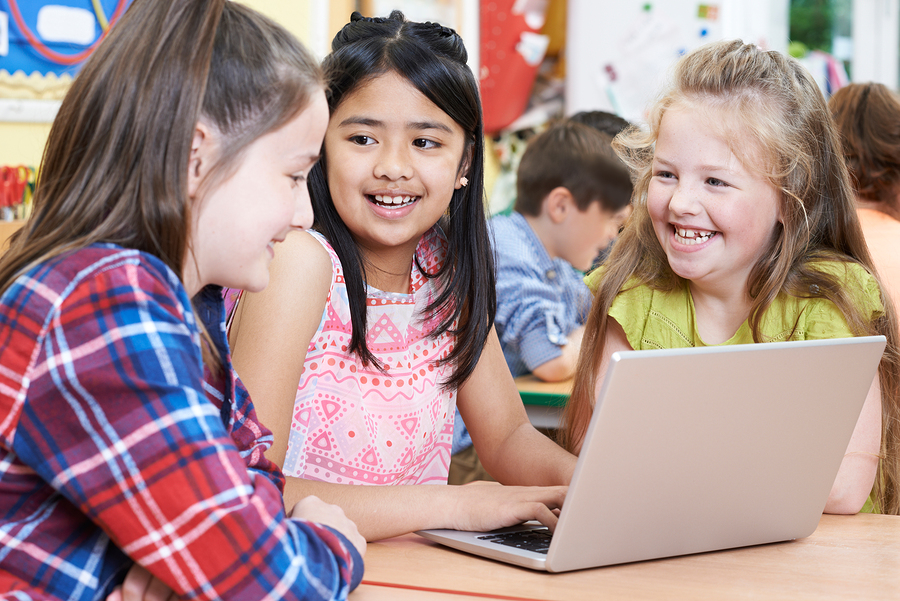“The influence teachers discourse and the feedback they provide plays a crucial role in the development of human talent.”
What beliefs have led you to be the person you are now? How do you relate linguistically to the people who depend on you? What has your language be like? What have your words supported? Are you aware that your words can build, or in their defect, destroy?
The influence of teachers’ discourse and the feedback they provide plays a crucial role in the development of human talent. The way we express ourselves, the language we use, our emotions and thoughts unconsciously influence the message we send. It is important to be careful about our communication with students in our daily teaching-student interactions because the words we use transcend and are determinants for how students will face future events that occur in their lives.
“From my personal and professional experience I have witnessed the feedback we give to students, often lacking a positive, real and constructive reinforcement; and on the contrary, focused on the criticism of punishment, judgment and opinion from an individual perception.”
The teacher is a role model who directly impacts the life of the student. Therefore, it is recommended that the teacher’s discourse foments empowerment, well-being, and human flourishing in the students. The latter means understanding how to recognize the human being as a person with splendor, endowed with gifts and talents that are discovered in inspiring spaces such as classrooms.
From my personal and professional experience, I have witnessed the feedback we give to students, often lacking positive, real, and constructive reinforcement, and on the contrary, focused on criticism, punishment, judgment, and opinion from an individual’s perception. By the above, I do not mean that the criticism is bad, but the way in which the criticism is provided. It happens in various work, family, and student settings, but, specifically, in the academic field. it is delicate if this happens because what we are looking for is that the student grows, that he can be excited to talk about what he learned, what he discovered, that he shows his cognition and development of critical thinking, and that he learns from his mistakes, seeing them positively and not negatively.
“Let’s look for students to grow and have the spirit to talk about what they learned, discovered, expose their cognition and develop their critical thinking, in addition to learning from their mistakes seen from the positive eye and not from the negative.”
Using positive linguistic reinforcement in our communication is both the simplest and most significant thing to do, increasing the likelihood of a positive response, as Skinner suggests. The ability to influence through language is a psychological technique capable of producing effects on our fellow men and women.
Neurolinguistic Programming (NLP), considered pseudoscience, was created by Richard Bandler and John Grinder in California in the 1970s. They argue that there is a connection between neurological processes, language, and behavioral patterns learned through experience, affirming that these can be changed to achieve specific goals in life (Rodríguez, Rodríguez, and Vico, 2018).
Most human beings use “the positive linguistic reinforcer” in the situations that we face in everyday life. In the academic field, for example, if you have students who show no interest in school, whose learning is not going well, the convenient thing is to motivate them with language, to look into it, to show empathy, to lead the students to reflection and to overcome their habits or behaviors that in those moments are not helping them, instead of making unfeeling judgments that would only bring more distance.
As adults and professionals, it is opportunistic to fill with health these “mental spaces” that could be affected by previous events and things outside of us. The teacher can play a fundamental role in that emotional, academic recovery by rescuing the student from something that happened to him and left him hurt. The important thing here is that there may be a third party and that third party could be the teacher.
My proposal is to delve into knowing and using the Neurolinguistic Programming (NLP). It is a tool that we can use in the educational field to support students to achieve things that they doubt they can do themselves, by eliminating the limiting beliefs plastered in their minds since childhood.
With the tools of NLP, good communication and mental processing habits are generated that serve to “see” situations as areas of opportunity.
“Human beings create themselves in language and through it.” – Rafael Echeverría (2003) –
Below, I share briefly two models suggested for providing feedback, namely, the GROW and BEFORE models:
-
The GROW Model, disseminated by the prestigious coach, Sir John Whitmore, although developed by Graham Alexander, proposes the following:
(G) Goal. The goals to be achieved. Some suggestions for questions: Tell me, what challenges do you want to work on? What goals do you want to achieve? What’s this about? What does it consist of?
(R) Reality. The reality that you are part of. Look at your strengths and resources, observing threats and opportunities. Some suggestions for questions: What situation are you in now? How are you feeling? What’s your biggest worry? What resources do you have to achieve the goal? What are you missing?
(O) Options/obstacles. These include the alternatives to achieve the objective, the strategic actions that can be considered possible, as well as the actions to be implemented to achieve the goal realistically. The analysis of potential obstacles serves to help design alternative strategies and plans. Some suggestions for questions: What obstacles can you encounter? What alternative actions do you have? What would your best friend do in this situation? What are the pros and cons of each of the options?
(W) Will/Way forward. In the end, it will be necessary to define an action plan to achieve the objective, as well as have the will and commitment to achieve it. Some suggestions for questions: What are you going to do? What specific actions are you going to take? When are you going to do it? What will be the first step? What support will you need? How committed are you to the plan? How will you celebrate when you’ve achieved the above?
-
The BEFORE Model, also known as The Six Steps to Effective Feedback, was developed by Jane Rodríguez del Tronco, Rosa Rodríguez del Tronco ,and Noemí Vico García: Behavior (B), Enquiry (E), Feelings (F), Outcome (O), Request (R ), Engagement (E).
(B) Behavior. Leaving aside judgments and opinions, putting objectivity ahead of subjectivity, we center ourselves on the behavior, focusing feedback on recognition.
(E) Enquiry. (Inquiry) After asking the other’s point of view
, the student evaluates the situation himself. This makes it possible to compare one’s own perception with that of the other. It means being objective, focused on facts, and leaving aside inferences or opinions.(F) Feelings. Sometimes it is convenient to show the other person how we feel about what happened, without judging. It is also necessary to manage the emotion of the person who receives the feedback, insisting that the feedback perception is about the fact itself and not about the person.
(O) Outcome. Identifying the consequences of what happened and measuring, in some way, the impact of the student’s conduct is also key.
(R) Request. Asking the student about alternative actions for the next time, causing him to reflect and identify what he can do; this will help empower him. You can also ask him explicitly what he wants to happen in the future.
(E) Engagement. Finally, it is essential that the student accepts and integrates the feedback received and that he or she undertakes to modify their behaviors. Otherwise, it will be difficult for them to change and improve their performance.
As teachers, we should be aware of the discourses that we give to our students. Although sometimes it might seem that they are distracted or that they are attending to other matters besides being in class (multitask mode), they are attentive to our words and our nonverbal expressions. Words are full of power and so are our nonverbal expressions. Let’s be aware of how we use them.
About the Author
Samira Susana Suro Barbosa (sami.suro@tec.mx) holds a degree in Psychology, specializing in Brief Systemic Therapy. She is a teacher in Higher Education and Administration of Educational Institutions. She has a diploma in Neurolinguistic Programming. She is a practitioner of mindfulness. She is currently a counselor at PrepaTec Cumbres.
References
De la Mora, L. (2003) Psicología del Aprendizaje. Teorías I. México: Editorial Progreso.
Echeverría, R. (2007). Actos de lenguaje. Volumen I La escucha. Buenos Aires: Garnica.
Echeverría, R. (2003). Ontología del Lenguaje. Buenos Aires: Garnica.
Rodríguez, J. Rodríguez, R. Vico, N. (2018). Smart Feedback. Conversaciones para el desarrollo del talento. Madrid: LID Editorial Empresarial.
This article from Observatory of the Institute for the Future of Education may be shared under the terms of the license CC BY-NC-SA 4.0 
)
)




)
Darío Esteban Recalde Morillo
Darío Esteban Recalde Morillo
Darío Esteban Recalde Morillo